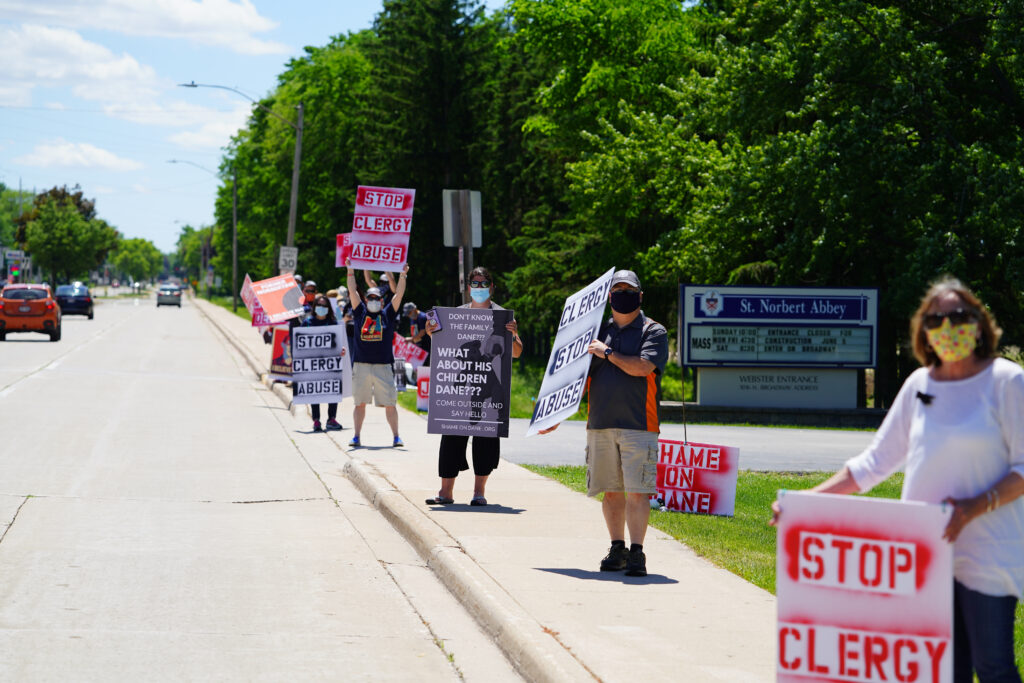
The issue of priest abuse within the Catholic Church is a troubling and complex topic that has garnered significant attention in recent years. At the heart of this issue are the priest abuse files, which contain records of allegations and investigations into cases of abuse committed by members of the clergy. These files provide a disturbing glimpse into the extent of the problem and the Church’s response to it.
The priest abuse files consist of documents that detail allegations of sexual abuse, physical abuse, and other forms of misconduct involving priests. These files are typically maintained by individual dioceses or religious orders within the Catholic Church. They contain information such as the names of accused priests, the nature of the allegations, and any actions taken by the Church in response to these allegations.
The history of priest abuse in the Catholic Church spans several decades, with cases dating back as far as the mid-20th century. It wasn’t until the late 1980s and early 1990s that widespread public awareness of this issue began to emerge. The revelation of high-profile cases, such as that of Father Gilbert Gauthe in Louisiana, brought the problem to the forefront of public consciousness.
It soon became apparent that these cases were not isolated incidents but rather part of a much larger pattern of abuse within the Church. As more survivors came forward with their stories, it became clear that abuse had been occurring on a widespread scale and that many cases had been covered up by Church officials. This revelation shook the faith and trust of many Catholics around the world.
For many survivors of the abuse that they endured has had lifelong consequences on their physical, emotional, and psychological well-being. The trauma experienced by survivors can manifest in various ways, including depression, anxiety, post-traumatic stress disorder (PTSD), and substance abuse.
Personal stories of survivors provide a heartbreaking glimpse into the lasting effects of abuse. Many survivors have struggled with feelings of shame, guilt, and self-blame, often leading to difficulties in forming healthy relationships and maintaining a sense of self-worth. The betrayal of trust by someone who was supposed to be a spiritual guide and mentor can leave deep scars.
The Church’s response to allegations of priest abuse has been a subject of intense scrutiny and criticism. Many times, the Church has been accused of covering up abuse, protecting abusers, and prioritizing the reputation of the institution over the well-being of survivors. This pattern of behavior has led to a loss of trust and credibility for the Church.
The Church’s response to allegations has varied over time and across different regions. In some cases, Church officials have taken immediate action to remove accused priests from ministry and cooperate with law enforcement investigations. However, there have also been numerous instances where allegations were ignored or dismissed, allowing abusers to continue their predatory behavior unchecked.
Investigative journalists have worked tirelessly to uncover the truth behind abuse allegations and bring them to light. Through their reporting, they have given survivors a platform to share their stories and have forced the Church to confront its failures in addressing this issue.
Media coverage has had a profound impact on the Church’s response to priest abuse. The public exposure of cases through news outlets has put pressure on Church officials to take action and be more transparent in their handling of allegations. It has also provided validation and support for survivors who may have previously felt silenced or ignored.
Seeking justice for survivors of priest abuse has been a long and arduous battle. Many survivors have faced significant challenges in their pursuit of legal recourse, including statutes of limitations, legal barriers, and the power imbalance between individuals and the institution of the Church.
Legal reforms have been enacted in some jurisdictions to extend or eliminate statutes of limitations for cases of child sexual abuse. This has allowed survivors to come forward and seek justice even years or decades after the abuse occurred.
In response to the widespread outcry over priest abuse, the Catholic Church has implemented measures aimed at preventing future abuse. These efforts include the establishment of safeguarding policies, mandatory background checks for clergy and employees, and training programs on recognizing and reporting abuse.
While these measures are an important step forward, their effectiveness remains a subject of debate. Critics argue that more needs to be done to address the systemic issues within the Church that have allowed abuse to occur and be covered up for so long. They call for greater transparency, accountability, and involvement of laypeople in decision-making processes.
Holding abusers accountable is not necessary for the survivors themselves but also for broader society. By ensuring that abusers face consequences for their actions, we send a clear message that abuse will not be tolerated and that those who commit such acts will be held responsible.